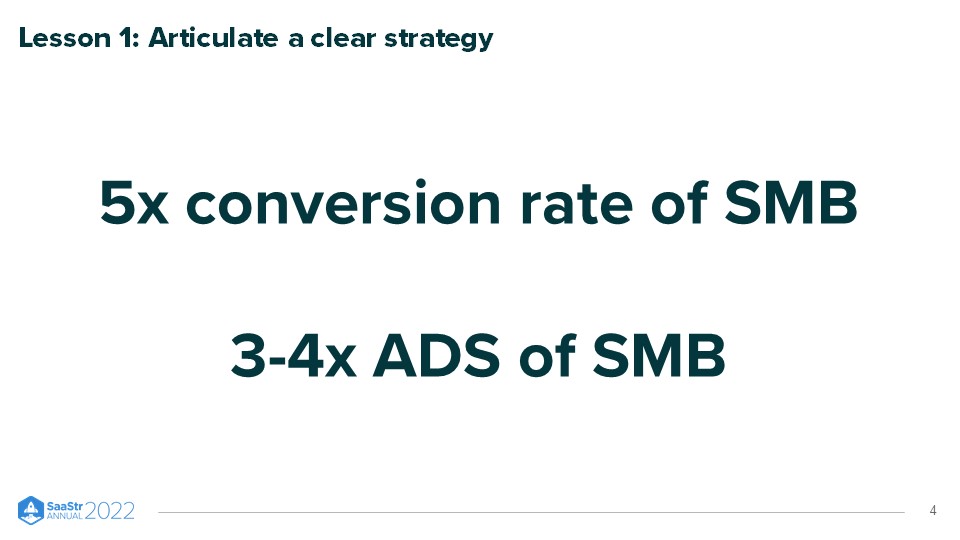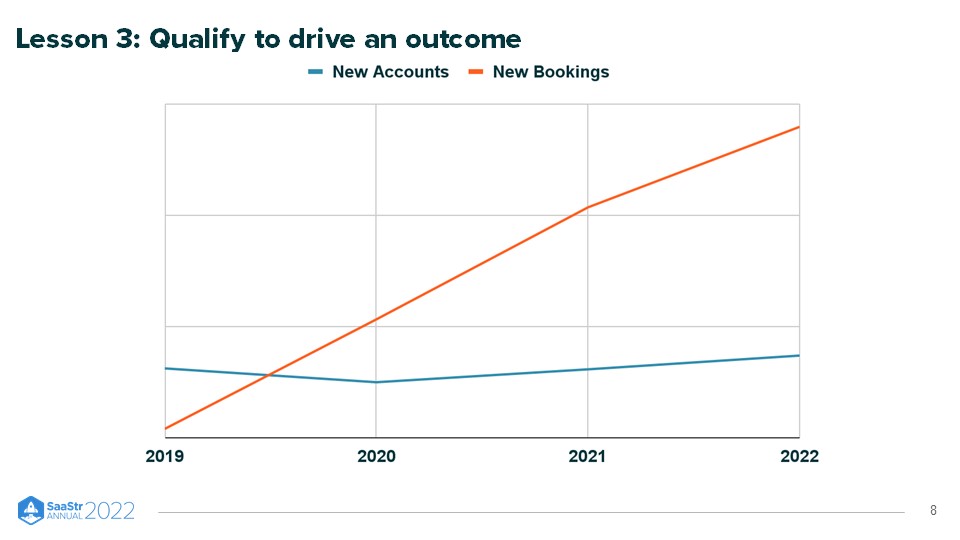B2B SaaS companies often aim to land large enterprise clients that can bring with them long relationships and large deals. Others may seek to corner the SMB market. However, what many businesses may overlook is the startup segment. Often, startups are lumped in with small businesses, yet this approach fails to recognize what motivates and attracts these early-stage companies.
In this SaaStr Annual session, Zendesk’s VP of Startups, Kristen Durham, shares insights into selling to startups and lessons to build your strategy.
Why Seek Out Startups?
Zendesk came of age as a company alongside some of the highly successful tech companies to date, like Uber and Airbnb, who are both Zendesk partners. Earlier on, selling was easy since it often involved personalized, CEO-to-CEO relationships.
However, as time passed, Zendesk began thinking critically about its customer segments. As Durham puts it: “Flashforward to $200M ARR, the company decided we wanted to make an intentional move toward the enterprise. So land and expand had been going great, but we wanted to make that push. And as part of that push from my vantage point as Chief of Staff, I saw the need to continue investing in those early-stage startups so that we didn’t put all our eggs in one basket but that we continue to grow and nurture the companies that would go on to become great.”
They began thinking about this segment because they realized they needed to properly engage their startups. They hoped to recreate that feeling of founder-to-founder selling and prioritize every company and help the growth, not just enterprise.

Lesson One: Articulate A Clear Strategy
Durham explains that you need to change your mindset when thinking about how to market to early-stage companies: “When you think about selling to early-stage startups, the first lesson is obvious: You have to ask yourself the question, what is it that you’re setting out to accomplish? How is it that you want to sell to startups differently than the rest of your customer base?”
Zendesk knew that they could risk selling to startups like any other SMB, so that was the problem they set out to solve. So they laid out a strategy that can be broken down into four pieces:
- Target: Find channels to reach high-growth startups. Think about how to find these valuable customers. Determine where and how to reach out to them.
- Acquire: Create a Compelling Offer. “We were selling startups the same thing we were selling everybody on the website, so we took time to really take stock of what was going to be necessary to be compelling to them different to what we were doing elsewhere in the business.”
- Serve: Avoid startup customers getting lumped into the overall base. Remember, they aren’t just another account. Anchor your startup strategy in a specific sales and service team.
- Nurture: Provide startup-specific resources to help them scale. After getting this customer segment through the front door, work on driving lifetime value and offering reasons for startups to stay and grow.
The numbers highlight how a startup-specific strategy pays off: Zendesk sees a 5X conversion rate for startup customers compared to that of an SMB, and Startups tend to have a 3 – 4x average deal size when compared to small businesses. Durham says, “We are judging ourselves in how we treat startups differently from an average SMB. We really anchor on these metrics where we can drive conversion rates higher, where we can drive average deal size higher. So, whatever it might be for your business, find those key metrics to anchor on and build them into a part of the strategy.”

Lesson Two: Create a Compelling Offer
Selling is tricky, and deciding on a startup pricing and product offering is something that Zendesk took time to perfect.
The Timeline:
- Pre-2018: $134 off/month, 1-year offer. Zendesk offered startup companies a discount of $134 per month for one year. While the discount did appeal to early-stage companies, the product still lacked a few key features that startups wanted.
- 2018 – 2019: By 2018, Zendesk built its product suite to better suit its base. They still offered a discount –– $218 or $436 off per month for a one-year offer. They began to see promising results as their median deal size increased by 63%.
However, they realized the usage hit a ceiling, and they hoped to drive usage up. - 2020 – 2022: They changed the program structure and gave startups 100% off for six months. Once the startups had a taste of the full suite, they encouraged higher product usage over time. Plus, they offered additional benefits via referral partners. As a result, the median deal size grew by 26%.
- 2023 & Beyond: Zendesk has expanded terms for later-stage startups. They are currently exploring new referral channels with private equity and late-stage VCs.

Lesson Three: Qualify to Drive An Outcome
Durham says, “For us, qualifying to drive an outcome really meant that we had to be intentional about who were the startups that we were trying to reach, and how are we trying to reach them.”
Early on, Zendesk hoped to attract large quantities of customers, so admission to the startup program was much easier to join. This strategy was a plus for sheer numbers, but they noticed the conversion and growth weren’t very impressive over time. So they decided to elevate the qualifications.
Now a startup applying for the program needed traction and funding to join. This meant fewer customers in the short term, but the deal value and quality improved over the long term. Additionally, as their partner channel grew, so did the quality and quantity of the lead flow.

Lesson Four: Build Partnerships to Build Your Funnel
Typically, when a SaaS company builds an ecosystem, they seek out compatible tech partners, system integrators, BPOs, etc. But if you are selling to startups, you have the opportunity to build healthy partnerships that are of interest to high-potential groups.
Zendesk began to realize that partnerships with VCs, accelerators, and incubators would present high value for startups. “When you’re selling to early-stage startups, you have the opportunity to create a different kind of channel, and one that is deep with influencers and really resonates with this audience in particular. And that is venture capital funds, accelerators, incubators, and other ecosystem partners.”
So if you plan to target startup customers, think about how you can align your programs, partnerships, and selling motions to drive value back to their business.

Lesson Five: Invest in Customer Success
Expansion is driven by a customer knowing that they’re getting real, continuous value from your product. Zendesk approaches this dynamic in a scaled way, so they can create meaningful relationships with customers without having to do the one-on-one of the old days. Here is how they create positive experiences at scale:
- Office Hours: This is an opportunity for onboarding companies with a group session. It’s a scaled tactic that empowers new customers to get valuable face time with Zendesk experts and peers. Startups join office hours within a month of entering the program or sooner, producing 3x reach of 1:1 engagement.
- Training: Two-thirds of the highest ARR deals complete three or more training courses. The highest performing startups engage in training, so they ensure to provide adequate training for their customers.
- 1:1 Customer Success: Success-managed accounts convert significantly better than overall. Conversion Rate: +12 points Average Deal Size: +75%
- Community Slack: Helpful for peer-to-peer learning, community-building, and collaboration

Lesson Six: Get Over How to Get Started
It’s easy to feel the pressure to craft a perfect strategy to win over valuable startup customers. The trick is just to get started. It won’t be perfect, but if you listen to feedback, track metrics, and try new initiatives, you’ll continue expanding and improving.
Key Takeaways
- A scaling startup will have different needs than an SMB, mid-market, or enterprise business, so prepare a distinct strategy for approaching this segment.
- Consider how you will qualify your customers and what criteria you will use.
- Commit to providing value through a consistent, valuable customer experience.

